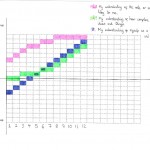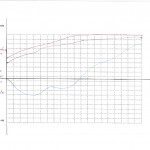Off to a flying start this week with a focus on practical skills in the workshop and more on the theoretical side in our first symposium. The symposium was a little bit explanatory rather than analytical though hopefully as we progress through semester the nature of the readings will mean that we can start discussing the expanded discourse in more depth.
Important Notes
All of the participation diaries are now available under the ‘Assessment‘ tab. If you need to access a copy in advance or due to absence, you can find them there.
We start work on the wiki tomorrow, so please check that out if you have a chance to see some of the previous entries from last semester. It’s available at www.mediafactory.org.au/niki. I’ve also added your blogs to a new blog roll that you can find over there –> and then down a bit. Check out each other’s blogs and see what your peers are up to.
Doing
We’ve got a few “how-to” posts already, so keep these coming. Helping out your peers with technical skills will be vital to getting the most out of this course as they’ll surely reciprocate in kind and we haven’t a whole lot of time with the length of this semester. Bryan talks about how to create a link list that can be added to, say, a sidebar, while Daniel makes sure everyone knows how to include a link in their posts. We’ve also got some multimedia aficionados keen to get A/V content into their blogs, such as Tim walking you through how to upload content (do this if you own the content) and Dana on how to embed content (do this if you do not own the content).
Thinking
Esther provides an excellent explanation of double-loop learning, while Kim L. thinks about how it applies to her own experiences. A few posts are cropping up about design fiction that are starting to posit the role of design fiction in the development of new technologies, such as Dana pointing towards things like Google Glass. Meanwhile, Mardy reflects on Blogs in Media Education and the rationale of their use in this course.
Spreading Out
It’s also good to see people starting to branch out into related ideas on their blogs. Vanessa thinks about the integration of blogs and SEO, while Mishell ponders networked dependency in the workplace. Kim O. looks at the significance of one’s virtual presence and the importance of maintaining a positive reputation, and of course Daniel wins hearts and minds with a video of a puppy.











